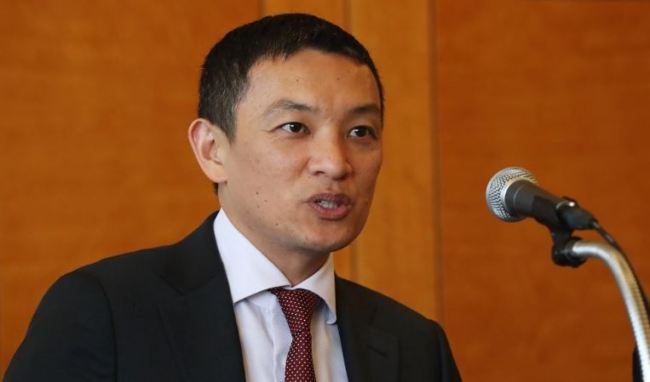South Korea’s economic growth will slow down in the upcoming years, weighed down by the global slowdown amid weak demand and ongoing trade conflicts, according to Moody’s Investors Service on Tuesday.
Despite the downward pressure, most local nonfinancial companies here are likely to see stable corporate earnings next year on the back of strong macroeconomic conditions, the credit ratings agency said.
“While South Korea’s exports are exposed to the US-China trade tensions via supply chain linkages, outlook for external demand and domestic labor market policies have weighed on the economic sentiment, as well as actual investment,” said Christian de Guzman, senior credit officer of the Sovereign Risk Group at Moody’s, at a press briefing in Seoul.
A week prior to the media event, the credit evaluator had lowered Seoul’s economic growth outlook for this year to 2.5 percent from its earlier projection of 2.8 percent. The corresponding figure for next year was lowered to 2.3 percent, down 0.6 percentage point from the original projection.
The forecast marked a contrast to those suggested by local institutions. The Bank of Korea set the outlook for 2018 and 2019 at 2.7 percent, and the state-run Korea Development Institute predicted 2.7 percent for this year and 2.6 percent for next year.
As external factors, the senior analyst cited the persistent trade dispute between Washington and Beijing, quantitative tightening gestures in key economies, and higher global oil prices.
Despite its change of government last year and a series of policy measures including tax changes, South Korea has continued to maintain sound public finances and a growth rate faster than peer economies, according to Guzman.
“The notable downside risk in the long term is population aging, which could lead to weaker fiscal strength unless there are structural reforms,” he warned.
As for signs of easing tension related to North Korea, Guzman said that the progress so far is not enough to trigger a change of Seoul’s sovereign ratings.
“Earlier this year, given the (inter-Korean and the US-North Korea summits), we lowered our assessment of the geopolitical risks but we still think that the road to permanent easing of tension is far from reach.”
In spite of ongoing challenges and risks, the agency gave a positive appraisal on the credit quality of rated nonfinancial companies here.
“We expect most rated companies to maintain broadly stable leverage in 2019, driven by healthy earnings and manageable capital spending,” said Chris Park, associate managing director at Moody’s.
By sector, technologies, steel, refining and chemicals will weaken slightly but nevertheless remain supportive in the upcoming year, while earnings for auto and retail companies will remain low despite some recovery, the analyst added.
While 17 out of the 23 private sector companies that are subject to Moody’s evaluation have maintained steady outlooks, key affiliates of the country’s largest automaker Hyundai Motor Group will face negative changes.
“Hyundai Motor, Kia Motors, Hyundai Mobis and Hyundai Globis, which are currently rated at Baa1, will face a downward adjustment due to performance degradation with little signs of recovery in the near future,” Park said.
“Also, we hold negative outlooks for SK Telecom, currently rated at A3, which has undergone profit deterioration upon merger and acquisitions, as well as contract discounts.”
KCC, a Baa2-level precision chemical company, was put on the watch list for aggravation in credit and financial leverage, following the acquisition of a silicon manufacturer in the United States, Park added.
The agency also suggested an optimistic view on South Korea’s financial companies.
“The soundness in the financial sector was largely led by local banks, which have successfully established a stable growth strategy since the financial crisis,” said Yang Hyun-jo, vice president and group head of financial affairs at Korea Investors Service, an affiliate of Moody’s.
“There is, however, a considerable level of regional unbalance as provincial banks have seen their indexes fall since year 2016, unlike central commercial banks.”
By Bae Hyun-jung ([email protected])


